Butterfly Gardener
Volume 23, Issue 2
Summer 2018
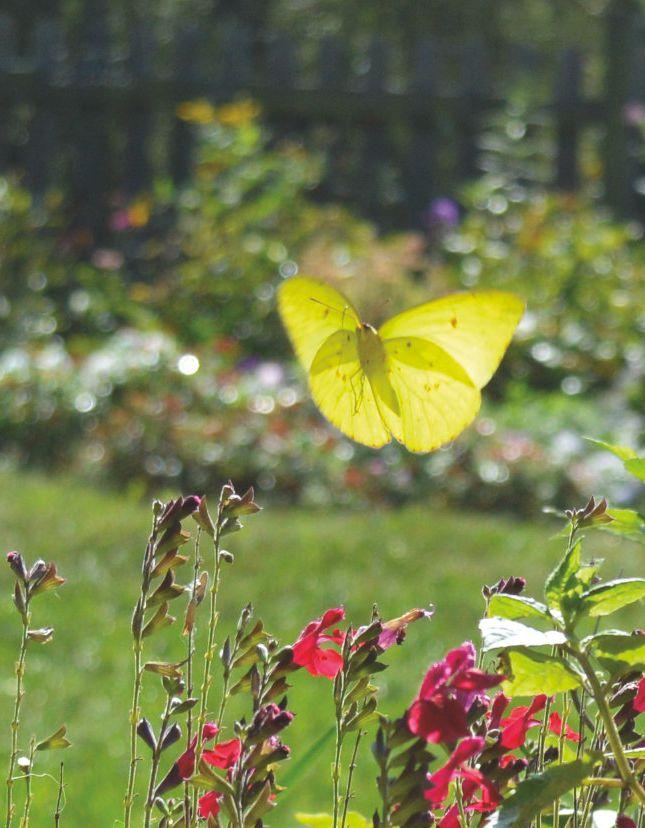
Managing Milkweed
Nervous About Planting Your First Butterfly Garden? Six Things You Should Know.
Wanted Alive in Your Garden: Silver-spotted Skipper Caterpillar

Volume 23, Issue 2
Summer 2018

Managing Milkweed
Nervous About Planting Your First Butterfly Garden? Six Things You Should Know.
Wanted Alive in Your Garden: Silver-spotted Skipper Caterpillar
Heatwaves, Japanese Beetles, weeds—just part of the familiar litany of general summer gardening woes. As butterfly gardeners, we are not immune to the challenges of keeping our gardens healthy and vibrant but we do enjoy a special perk: we can watch butterflies as we swelter, trap, and hoe our way through the dog days of summer.
When you are ready for a break from the usual garden routine, NABA’s Butterfly Count Program offers you a way to get out of the garden (those weeds will wait!) to see more butterflies. Each count is a little different but all of them are fun; in addition to meeting other butterfly enthusiasts, your count-day efforts will add to the pool of information used by scientist who work to better understand butterfly distributions and population size, and how these are changing over time.
Check http://www.naba.org/counts/maps11.html to find a count in your area!
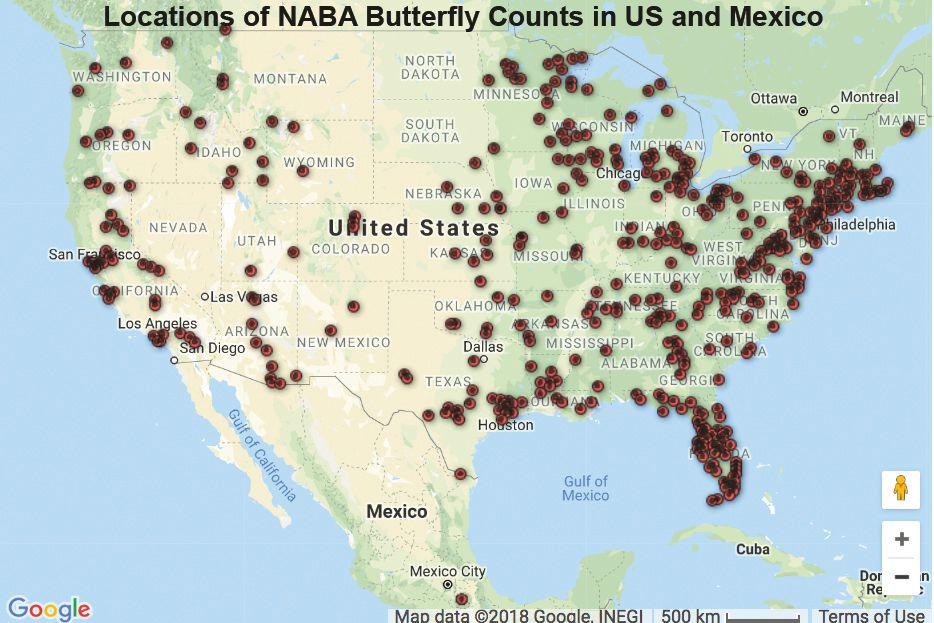
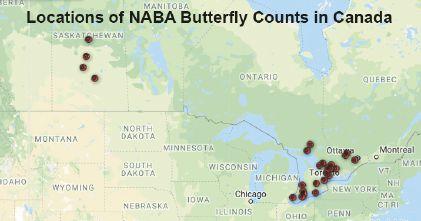
—Jane Hurwitz, Editor
Butterfly Gardener is published quarterly by the North American Butterfly Association, Inc. (NABA). © 2018 by the North American Butterfly Association, Inc. All rights reserved. Views of contributors do not necessarily reflect the views of NABA.
Editor: Jane Hurwitz
Associate Editor: Mary Anne Borge
We want to hear from you! Please send Butterfly Gardener correspondence and submissions to: Jane Hurwitz, Editor, NABA, 4 Delaware Road, Morristown, NJ 07960; hurwitz@naba.org
Articles, gardening tips and observations, artwork, digital high resolution photographs, poetry and comments will be considered for publication. Please send self-addressed stamped envelope for items to be returned.
Butterfly Gardener welcomes advertising. Please write us at: Butterfly Gardener, 4 Delaware Road, Morristown, NJ 07960, or telephone (973) 285-0907 or fax (973) 285-0936 for current rates and closing dates.
For questions concerning membership issues, magazines, or changes of address, please write to NABA Membership Services, 4 Delaware Road, Morristown, NJ 07960. Occasionally, members send membership dues in twice. Our policy in such cases, unless instructed otherwise, is to extend membership for an additional year.
Laura Darnell
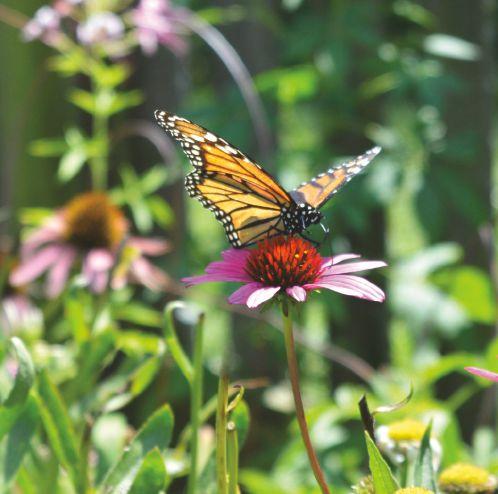
photos by Laura Darnell
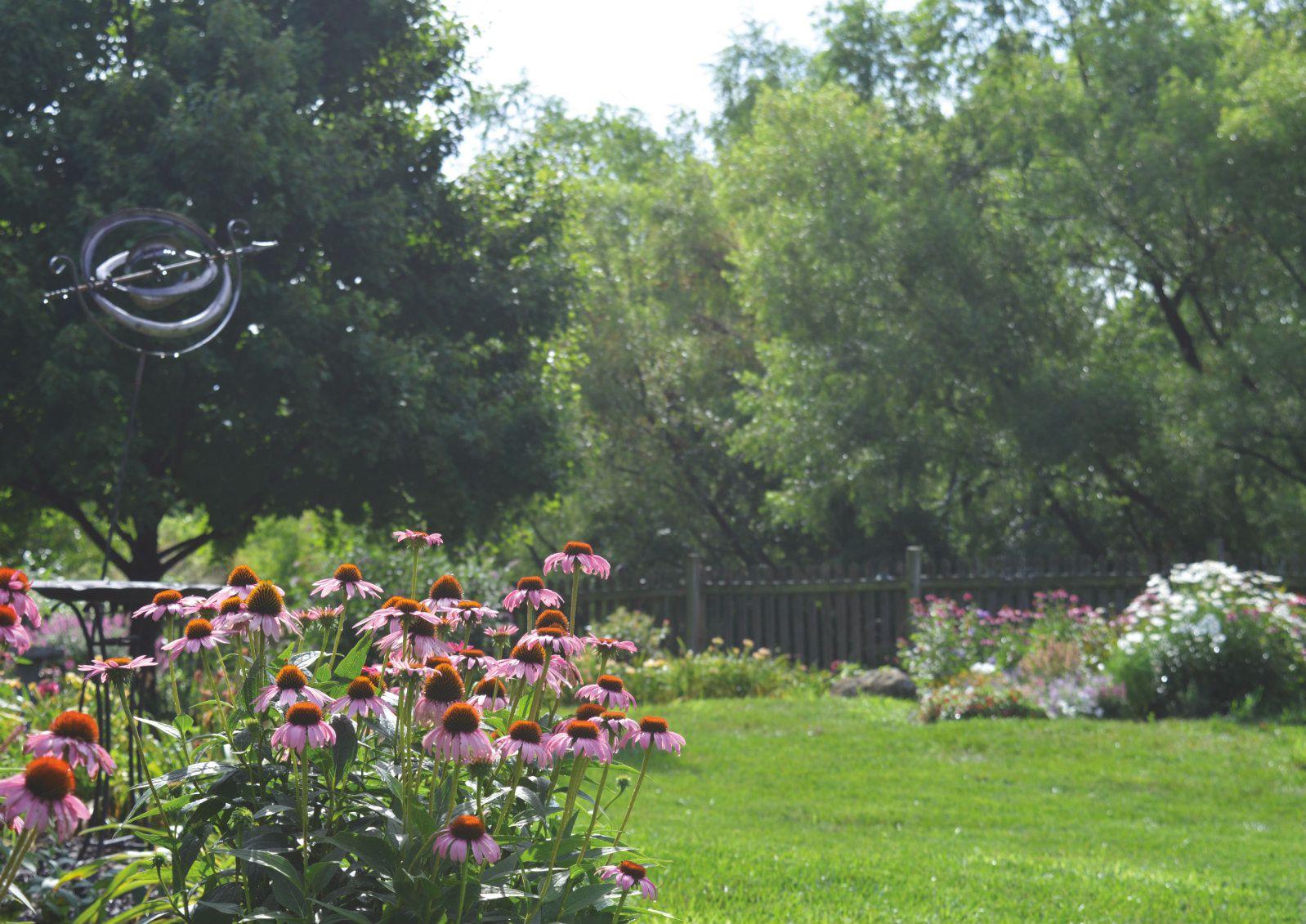
When my family planted our first butterfly garden I was more than nervous—I was pretty sure we would kill everything within a month. I didn’t know anything about gardening other than what I’d Googled. In fact, I didn’t even know anyone who gardened.
But we had a four-year-old who loved butterflies and a one-year-old who loved dirt, so we gave it a shot. Even though we made a lot of mistakes, that first garden was more successful AND more fun than we ever thought possible.
Here’s what you should know if you have never gardened before (and what I wish someone had told me):
1. It is much easier than you imagine.
Butterfly and pollinator plants are easy to grow. The backbone of a butterfly garden consists of native and non-native perennial plants—perennial meaning that they come back year after year. Their flowers are pretty, but these plants are not delicate in the least—they can handle kids, dogs, and mistakes made by beginning (and busy) gardeners.
We have seen our own gardens not only survive, but thrive, even when we ignore them. Life gets a little crazy sometimes and you don’t need the extra pressure of your plants dying on top of everything else. Just keep in mind that you can’t completely ignore a brand-new garden—even drought-tolerant plants need a little TLC during their first growing season.
2. Spring and fall are the best times to establish new plants.
When you plant in the early spring or fall, you get a free pass to be lazy. I moved several Eastern Purple Coneflowers to new locations in mid-March and haven’t had to do a thing for them since; I have not even watered them except when I first transplanted them to their new locations.
You can safely ignore new transplants like this only in the fall or early spring, and even then keep an eye on the weather—but milder temps, cloudy days, and frequent rains tend to make new plants very happy.
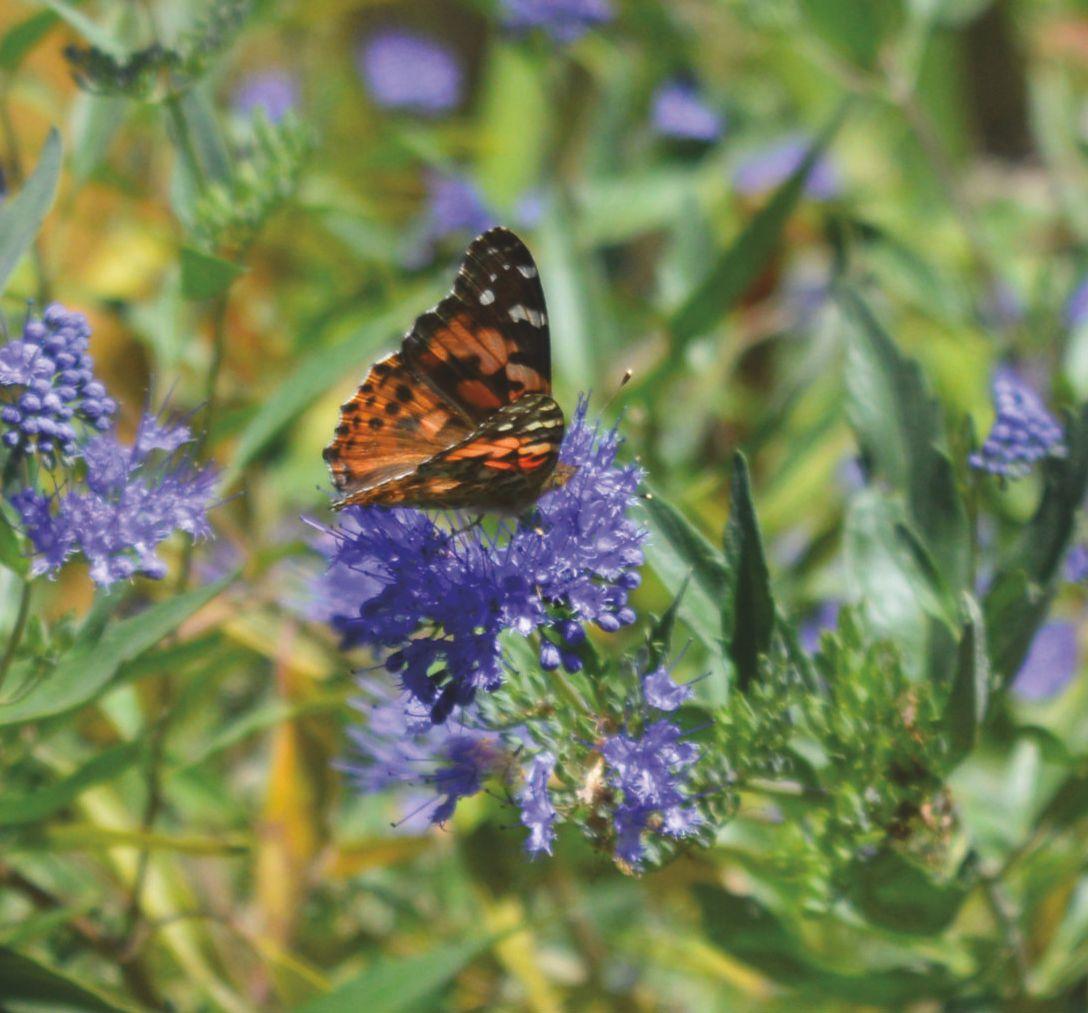
Just because spring and fall are the best time to garden, doesn’t mean that it’s impossible to start your first butterfly garden in the summer. It just won’t be quite as easy, because consistent watering will be key to helping your plants survive hot weather.
3. Perennials don’t look their best during their first growing season.
Garden centers and nurseries tend to skip this info on plant tags, and you can see why!
Unfortunately, this incomplete information makes many beginners think they’re doing something wrong, so that they may give up on their young plants way too soon. The accompanying photos (on the next page) give you a more realistic idea of what to expect the first year you plant perennials.
These plants don’t appear to grow much during their first year in the garden because they’re developing the root systems that will sustain them through their long lives. During their second year they grow a little bigger and faster, and by their third year, most perennials look amazing. Just be patient and remember that initial slow growth is normal and does not mean that something is wrong.
If you would like your first butterfly garden to display a lot of flowers right away, be sure to include annuals. Either started from seed or purchased as bedding plants, annuals complete their life cycle in one season—they do not regrow each year the way perennial plants do. Annuals, such as Zinnias, do a great job of attracting butterflies and make your garden look, well, like a garden, while you’re waiting for the perennials to fill in.

4. Plants do not live forever.
This fact actually surprises a lot of new gardeners. Not every plant dies because of an error made by the gardener, so don’t get too torn up about it if a plant doesn’t make it. The ‘Becky’ Shasta Daisies (Leucanthemum x superbum ‘Becky’) in the photo above are all from one plant.
Shasta Daisy is an example of a short-lived perennial; it is recommended that the plant be divided every three years to maintain vigor. They’re beautiful while they last, though, so I divide them, or replace if needed, and don’t worry about it. But the first time I had one die I was sure I’d done something wrong until I did some research.
The bottom line is that some plants won’t work out while others will perform beautifully. The most experienced gardener I know can’t get poppies to grow at all. Some plants require very specific growing conditions and soil type, while others aren’t so choosy. The only way to find out what works in your own garden is to try a variety of plants.
5. How much work does a garden really require?
Not as much as you might think. Maybe you are dreading the part with the shovel, but getting small beds ready only takes a few hours, and you only have to do it once.
What about weeding? The more often you do it, the less time it takes. Personally, I only weed every two to three weeks. I find that you can weed a fairly large garden in about an hour if you haven’t let more than a few weeks elapse between weeding sessions.
The amazing thing about butterfly gardening is that a lot of these chores just don’t feel like chores. Planting flowers and taking care of a butterfly garden isn’t like washing the dishes or taking out the trash. When was the last time you saw butterflies and hummingbirds while dusting?
Taking care of a butterfly garden feels more like spending time outside enjoying nature. You can garden with the people you care about, or simply enjoy some peaceful time alone. Recent studies show that gardening is a great stress reliever and has additional health benefits as well. (FYI for parents: Plants never scream or cry when you take care of them.)
6. You’ll never know if you don’t try.
I still remember how apprehensive I was when we started gardening—it was something I wasn’t at all sure that we’d enjoy or be good at. Now I can’t imagine my life without it. Being able to step outside and be surrounded by butterflies, hummingbirds, and flowers is pretty amazing. Plus, it feels great to know that we’re helping pollinators, wildlife, and the local environment in a very real way
Our garden didn’t happen overnight—we’ve been gardening for butterflies for more than a decade now. This has given us time to experiment with different plants and build on what we’ve learned. Every year our gardens improve and we see more butterflies and hummingbirds than the year before.
So don’t be afraid to try something new—just by reading this you know more than my family did when we started out! Your skills and confidence will grow along with your first garden, too.
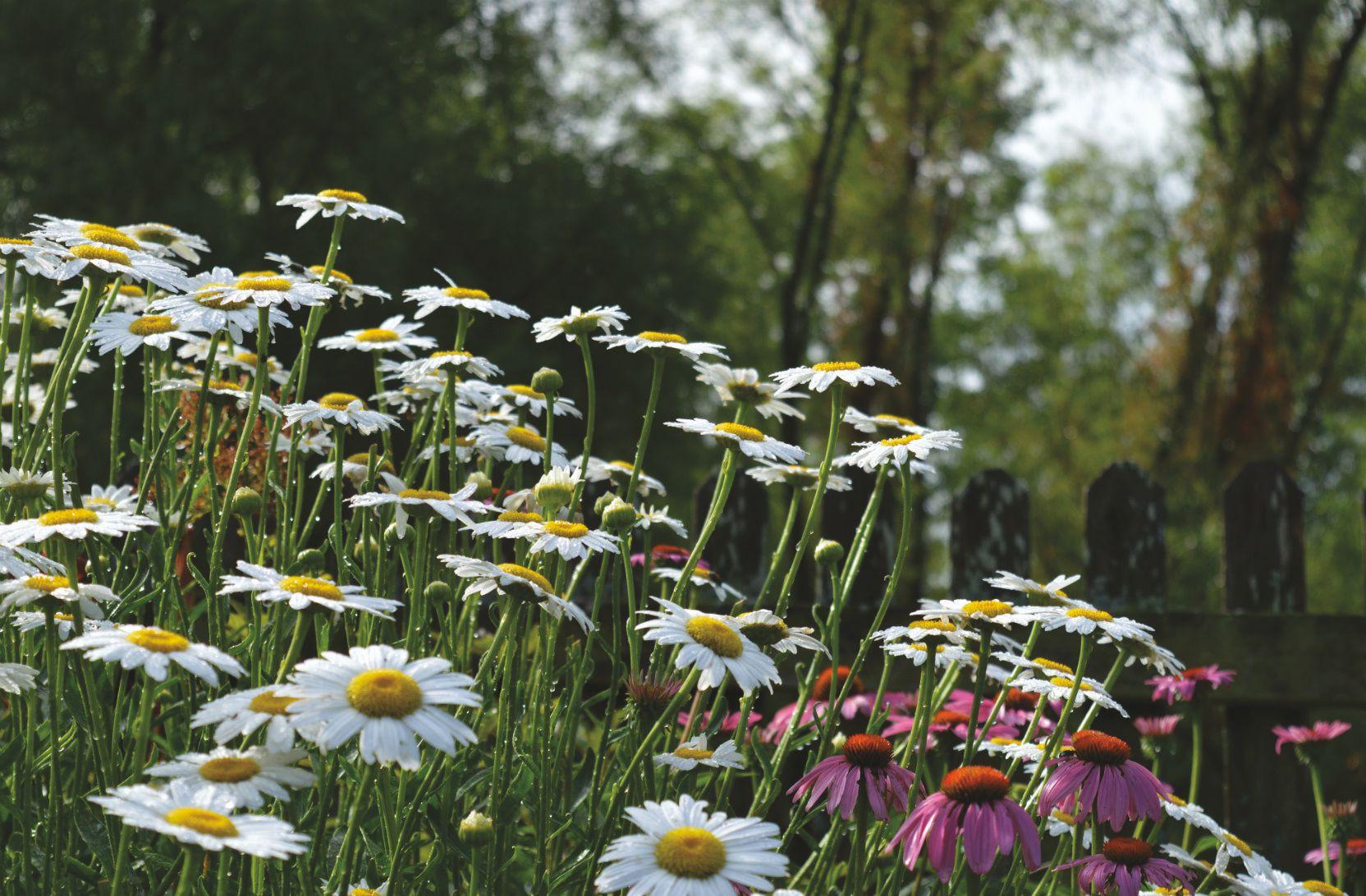
Laura Darnell was originally inspired to try gardening by her butterfly-obsessed four- year-old. Amazed by how the right plants transformed their boring backyard into a nature-filled escape, she created ButterflyGardening101.com — a helpful blog that shares how easy and rewarding attracting butterflies can be. A version of this article previously appeared on ButterflyGardening101.com in March of 2018.

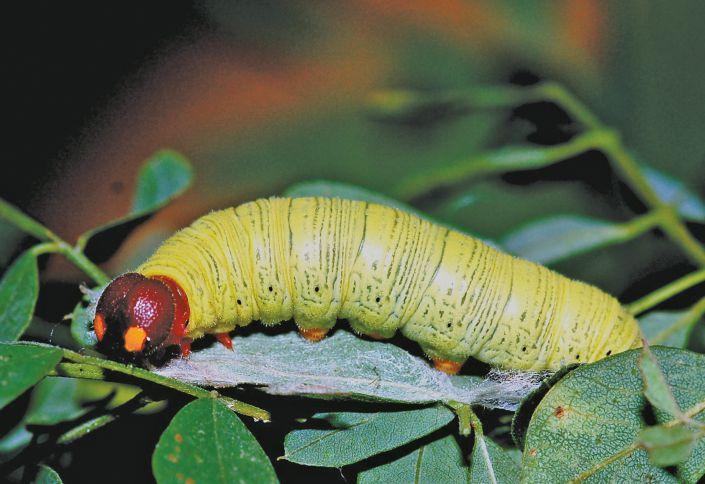
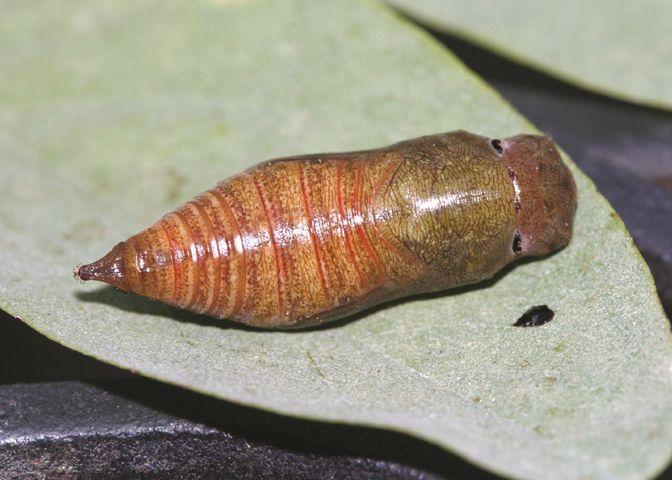

Special weaponry: The caterpillar must be exceptionally delicious because it has multiple defenses, starting with its taco-shell-like shelter, a folded leaf secured with silk spun by the newlyemerged caterpillar. As it matures, the caterpillar uses its silk to join multiple leaves together to form a larger shelter. The primary consumers of Silver-spotted Skipper caterpillar are not birds, but predatory and parasitoid wasps. Predatory wasps paralyze caterpillars with a sting and take them back to their nests to feed wasp larvae. Parasitoid wasps lay their eggs on or inside the caterpillar’s body; the eggs hatch into larvae that then feast on the doomed caterpillar from the inside out. Not only can these wasps recognize the folded leaf shelters, they can also locate their caterpillar prey by the aroma of the accumulating frass—the caterpillar’s poop. As a defense, a Silver-spotted Skipper caterpillar gets rid of this “evidence” of its presence. The caterpillar is equipped with a “fecal catapult” that hurls its fecal pellet away, up to 38 times its body length! As if that weren’t enough, the caterpillar can regurgitate a bitter-tasting defensive chemical when disturbed.
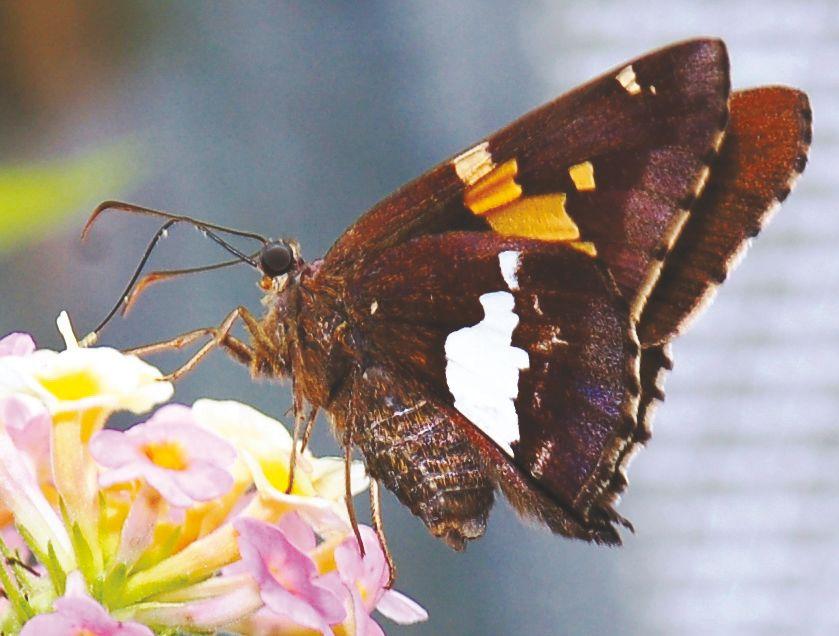
If capture is avoided: An adult butterfly emerges in spring. Silver-spotted Skippers are ubiquitous throughout the United States and fly year-round in warmer areas. In the Midwest, three broods ensure flying adults from April through October. They are easily identified by the silver splash on the darkbrown hindwing and a jerky flight pattern.
Lenora Larson is a Marais des Cygnes Extension Master Gardener and a member of the Idalia Butterfly and Kansas Native Plant Societies. She loves to garden and host butterflies in the cruel winds and clay soils of Paola, Kansas. She may be contacted at lenora.longlips@gmail.com
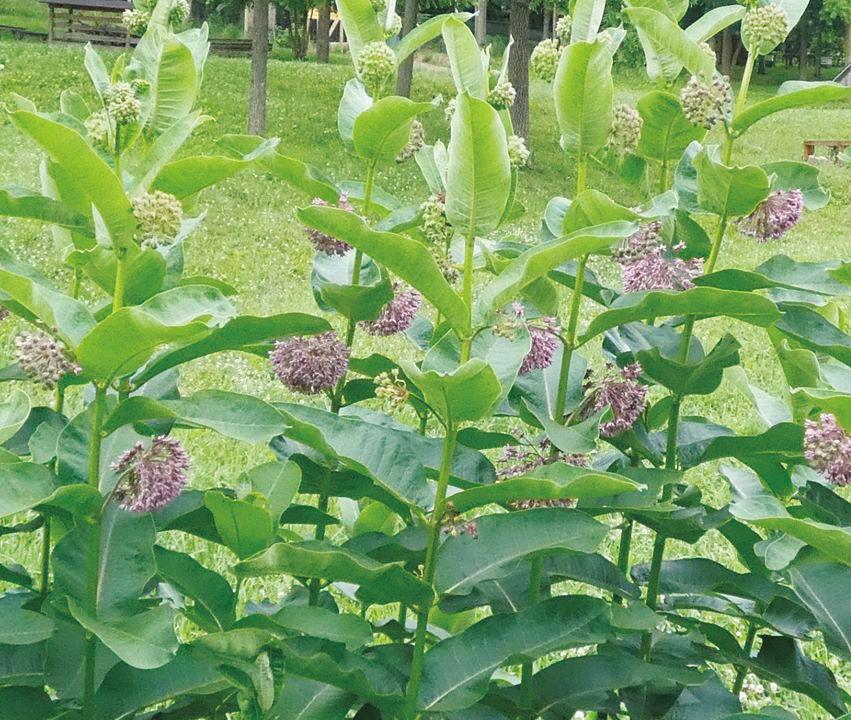
Text
and photos
by Ken Carman
You have planted Common Milkweed (Asclepias syriaca) in your garden or on your property after discovering that milkweed is critically important to helping the Monarch butterfly population because it is the only food source for their caterpillars. Yet little did you realize that Common Milkweed blossoms have a heavenly scent and provide nectar for a host of other butterflies, plus native bees and other pollinators. It’s unfortunate that these wonderful flowers are in bloom for only a few weeks before starting to set seed—and once seed sets, the plant’s foliage also starts to lose its vibrancy. Wouldn’t it be nice if you could enjoy the plant’s dramatic foliage, the flowers’ heavenly scent, and all of the pollinators they attract and feed, for months instead of a few short weeks. Well, with some welltimed interventions, you can!
Common Milkweed responds well to pruning, which is simply a technique of cutting back the main stalk to just above a set of lower leaves. When a milkweed plant is pruned, its seasonal growth pattern “starts over” by growing one or more new shoots. When the plant is thus forced to regrow, flowering will be delayed on the cut stalks, resulting in an overall longer blooming season for the pruned plant.
If you have a large patch of Common Milkweed, you can cut different plants at different times over a span of several weeks, and you can cut some back farther than others. In fact, you may want to cut a few of your plants back all the way to the ground in midseason before they bloom, just as though they had been mowed. The new shoots that sprout will bloom much later than the uncut plants. Of course, you should be sure to leave plenty of plants intact, so that they bloom at their normal time in early summer.
Also, consider cutting your milkweeds back just after the first set of blooms begins to fade; the plants will often sprout new shoots that will produce a second set of flower buds, followed by late-season blossoms. If you have a good stand of Common Milkweed, and get really creative with your cutting-back schedule, you can extend the bloom season of your milkweed plants from just a few weeks to several months!
Summer storms, with wind and hail, can topple large Common Milkweed plants. If a plant blows over, don’t remove it. Just pile a little mulch or compost on the portion of the damaged stem, and it will often go right on growing and blooming. Many of my plants have been broken in the middle by a storm, but as long as the stems weren’t severed completely, the plants
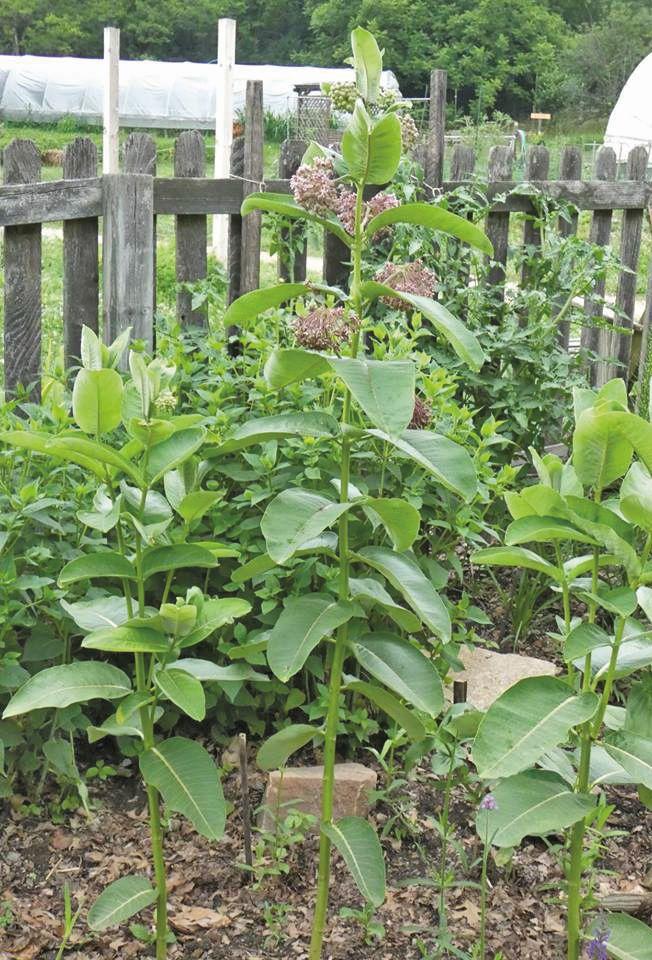
Photo above: An uncut Common Milkweed in the Gorman Heritage Farm Children’s Garden is flanked on both sides by two plants that were cut back a couple of weeks prior.
Photo opposite: Just north of the parking lot at Gorman Heritage Farm is a bed of beautiful Common Milkweed in full bloom. Some milkweed has been cut back to extend its blooming period.

Cut-back Common Milkweed showing vigorous regrowth on its way to a delayed first bloom.
recovered and went right on growing and blooming.
Common Milkweed tends to be very deep rooted and is easy to grow, even in heavy clay soils. However, if you give the plant a little tender loving care, and grow them in deep, rich, heavily mulched soil, they will multiply at a much faster rate. But be careful! Common Milkweed can spread rapidly by underground stems and take over a garden space in very little time.
So manage your milkweed wisely, and you and your pollinator friends can enjoy a full summer’s worth of bloom!
Ken Carman is a volunteer at Gorman Heritage Farm, a 122-acre nonprofit, working farm, located near Cinncinatti, Ohio. The farm’s mission is to educate about agriculture, nutrition, sustainability, and the environment. Ken’s work at Gorman Heritage Farm includes creating well maintained pollinator habitat, removal of invasive plants, and photographing everything there is to see on the farm. He has recently started a new pollinator garden right next to the parking lot at the entrance to the new interpretive center; the garden will demonstrate how to effectively create pollinator habitat in unusual locations.

Photo above: At the bottom left corner of this photo you can see where this Common Milkweed broke off during high winds. Since the rest of the stem stayed intact, the plant remains green and vibrant, and will finish its blooming efforts.
Photo right: Close-up of broken Common Milkweed, showing how little of the stalk stayed intact, and yet the plant looks as healthy as any others in the bed


Please photocopy this membership application form and pass it along to friends and acquaintances who might be interested in NABA. www.naba.org
Yes! I want to join NABA and receive American Butterflies and Butterfly Gardener and/or contribute to the creation of the premier butterfly garden in the world, NABA’s National Butterfly Center. The Center, located on approximately 100 acres of land fronting the Rio Grande in Mission, Texas, uses native trees, shrubs and wildflowers to create a spectacular natural butterfly garden that significantly benefits butterflies, an endangered ecosystem, and the people of the Rio Grande Valley.
Name:
Address:
Email:
Telephone:
Special Interests (circle): Listing, Gardening, Observation, Photography, Conservation, Other:
Dues enclosed (circle): Regular $35 ($70 outside U.S., Canada or Mexico), Family $45 ($90 outside North America). Special sponsorship levels: Copper $55; Skipper $100; Admiral $250; Monarch $1000. Institution/Library subscription to all annual publications $60 ($100 outside U.S., Canada or Mexico). Special tax-deductible contributions to NABA (please circle): $125, $200, $1000, $5000. Mail checks (in U.S. dollars) to: NABA, 4 Delaware Rd., Morristown, NJ 07960. Visit our website www.naba.org
Articles, gardening tips and observations, artwork, digital high resolution photographs, poetry and comments will be considered for publication. Contact Jane Hurwitz, Editor, hurwitz@naba.org
Butterfly Gardener welcomes advertising. Please contact us for current rates and closing dates at naba@naba.org, or telephone 973.285.0907, or fax 973.285.0936
If you have questions about duplicate magazines, missing magazines, membership expiration date, change of address, etc., please write to NABA Membership Services, 4 Delaware Rd., Morristown, NJ 07960. Occasionally, members send membership dues twice. Our policy in such cases, unless instructed differently, is to extend membership for an additional year. NABA sometimes exchanges or sells its membership list to like-minded organizations that supply services or products that might be of interest to members. If you would like your name deleted from membership lists we supply to others, please write and inform us at: NABA Membership Services, 4 Delaware Rd., Morristown, NJ 07960.
Join the growing numbers of butterfly gardeners who have certified their gardens with NABA!
For information visit: www.nababutterfly.com
Come to the NABA Members Meeting!
Make new friends, see new butterflies! You are invited to the Biennial NABA Members Meeting in Tallahassee, Florida, September 16-19, 2018. Beginners are welcome! Three days of field trips; two sumptuous banquet dinners; great speakers, including Anurag Agrawal, author of the critically acclaimed “Monarchs and Milkweeds” and of a recent scientific paper examining the factors causing the decline of Monarchs.
Go to http://naba.org/meeting.html where you can choose to register online, or you can print out a registration form and register by U.S. mail.
Either way — we’d love to see you there!
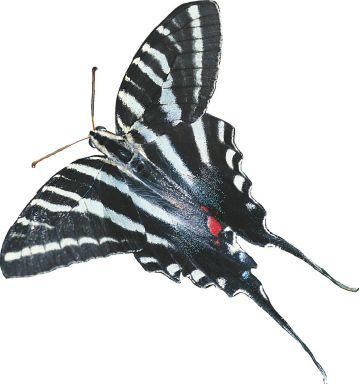
You’ll be glad that you did!
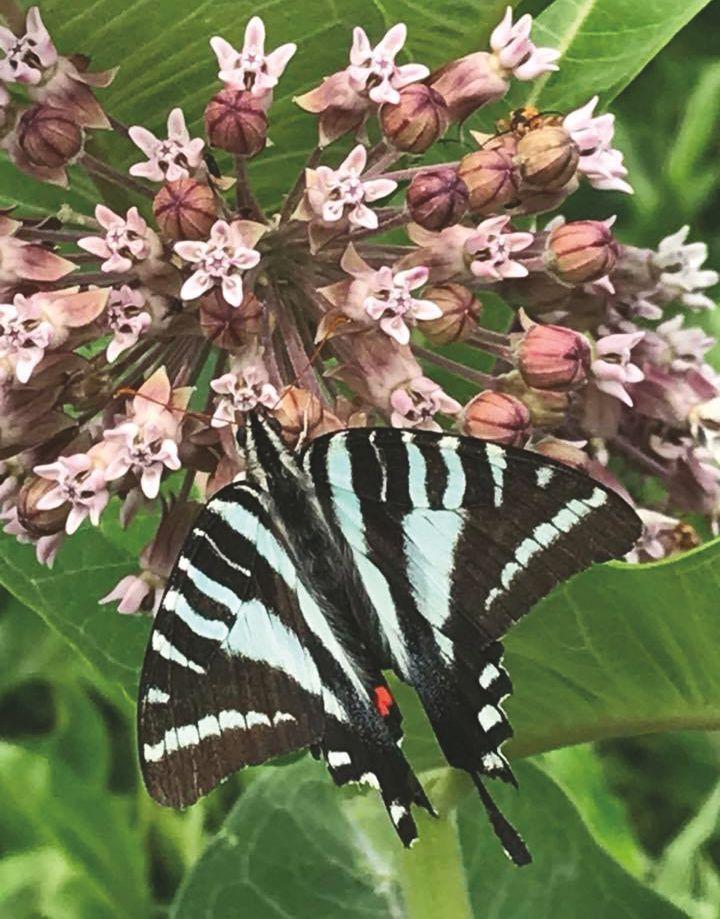
--- Al Schirmacher